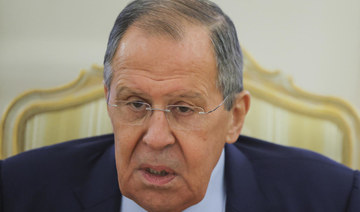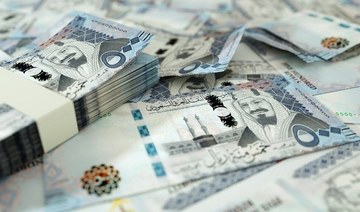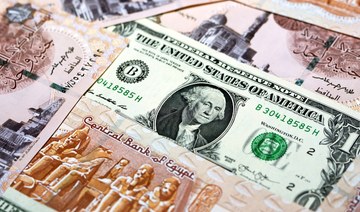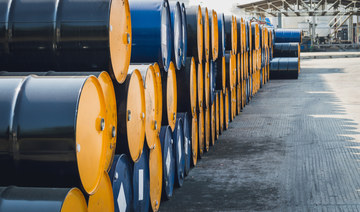MOSCOW: President Vladimir Putin on Tuesday delivered Russia’s long-awaited response to a Western price cap, signing a decree that bans the supply of crude oil and oil products from Feb. 1 for five months to nations that abide by the cap.
The Group of Seven major powers, the European Union and Australia agreed this month to a $60-per-barrel price cap on Russian seaborne crude oil effective from Dec. 5 over Moscow’s “special military operation” in Ukraine.
The cap is close to the current price for Russian oil, but well beneath the windfall price Russia was able to sell for this year and that helped offset the impact of financial sanctions on Moscow.
Russia is the world’s second largest oil exporter after Saudi Arabia, and a major disruption to its sales would have far reaching consequences for global energy supplies.
The decree, published on a government portal and the Kremlin website, was presented as a direct response to “actions that are unfriendly and contradictory to international law by the United States and foreign states and international organizations joining them.”
“Deliveries of Russian oil and oil products to foreign entities and individuals are banned, on the condition that in the contracts for these supplies, the use of a maximum price fixing mechanism is directly or indirectly envisaged,” the decree stated, referring specifically to the United States and other foreign states that have imposed the price cap.
“The established ban applies to all stages of supply up to the end buyer.”
The decree, which includes a clause that allows for Putin to overrule the ban in special cases, stated: “This...comes into force on Feb. 1, 2023, and applies until July 1, 2023.”
Crude oil exports will be banned from Feb. 1, but the date for the oil products ban will be determined by the Russian government and could be after Feb. 1.
Wider deficit
The price cap, unseen even in the times of the Cold War between the West and the Soviet Union, is aimed at crippling Russian state coffers and Moscow’s military efforts in Ukraine.
Some analysts have said that the cap will have little immediate impact on the oil revenues that Moscow is currently earning.
However, Finance Minister Anton Siluanov said on Tuesday that Russia’s budget deficit could be wider than the planned 2 percent of GDP in 2023, with the oil price cap squeezing export income, an extra fiscal hurdle for Moscow as it spends heavily on its military campaign in Ukraine.
Russia has been promising to respond officially for weeks, and the eventual decree largely established what officials had already said publicly.
The G7 price cap allows non-EU countries to continue importing seaborne Russian crude oil, but it will prohibit shipping, insurance and re-insurance companies from handling cargoes of Russian crude around the globe, unless it is being sold for less than the price cap.
EU countries have separately implemented an embargo that prohibits them from purchasing seaborne Russian oil.
Russian Urals oil traded above $56 per barrel on Tuesday, below the price cap level.
Brent crude oil moved a little higher on the news and was up 1.4 percent at $85.1 by 1743 GMT.
Putin bans Russian oil exports to countries that impose price cap
https://arab.news/5r4p3
Putin bans Russian oil exports to countries that impose price cap
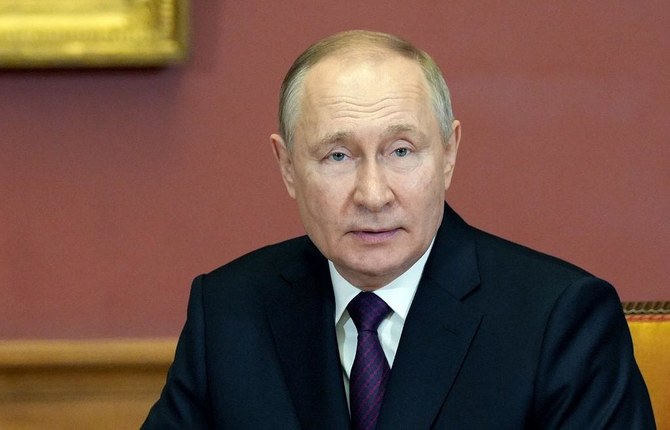
- G7, EU, and Australia agreed this month to a $60-per-barrel price cap on Russian seaborne crude oil effective from Dec. 5
Red Sea Global collaborates with Almosafer to elevate tourism sector in Saudi Arabia
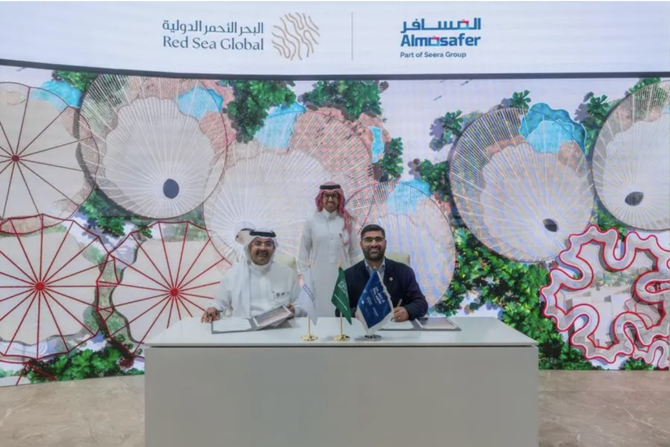
RIYADH: Saudi Arabia’s tourism landscape is set for a boost after multi-project developer Red Sea Global signed an agreement with travel company Almosafer.
According to a statement, the deal will see the firm showcasing and promoting the destination’s tourism developments and offerings.
“With Almosafer’s support, we will help travelers discover just how special this part of the world is, from the pristine coastline and breathtaking coral reefs to the stunning dunescapes and wadis,” said Group CEO of Red Sea Global John Pagano.
He added: “Our growing portfolio is set to unlock the tourism potential of the Red Sea coast for all segments of travel with a diverse range of experiences and offerings.”
Under the deal, both companies will collaborate on targeted marketing and promotion campaigns to raise awareness among travelers, highlighting the offerings in the Red Sea and AMAALA.
Developing the tourism sector is crucial for Saudi Arabia, as the Kingdom is steadily pursuing its economic diversification journey by reducing its dependency on oil.
Saudi Arabia’s National Tourism Strategy aims to attract 150 million visitors to the Kingdom by 2030 and create 1.6 million jobs in the sector.
“The partnership with Red Sea Global reflects our shared vision for redefining luxury travel and shaping the future of luxury tourism in Saudi Arabia. We are excited to leverage our geographical reach and decades of experience to position them as the ultimate destinations that set new standards in bespoke tourism experiences,” said Muzzammil Ahussain, CEO of Almosafer.
With 79 hotels in total, the Red Sea and AMAALA are projected to contribute SR33 billion ($8.79 billion) annually to the Kingdom’s economy upon completion in 2030.
Meanwhile, Red Sea Global also signed another deal with Saudia, the national flag carrier of Saudi Arabia, to streamline the travel experience of employees working with the multi-project developer.
The partnership will enable employees of Red Sea Global and its affiliates to access exclusive upfront discounts and special corporate rates while traveling with Saudia, the Saudi Press Agency reported.
“We are excited to collaborate with Red Sea Global and offer them seamless travel solutions to connect with international partners and talent,” said Saudia chief commercial officer Arved Von Zur Muehlen.
He added: “This partnership reflects Saudia’s unwavering commitment to supporting the Kingdom’s economic objectives and positioning it as a global tourism hub.”
Global ESG sukuk market projected to surpass $50bn thanks to funding diversification
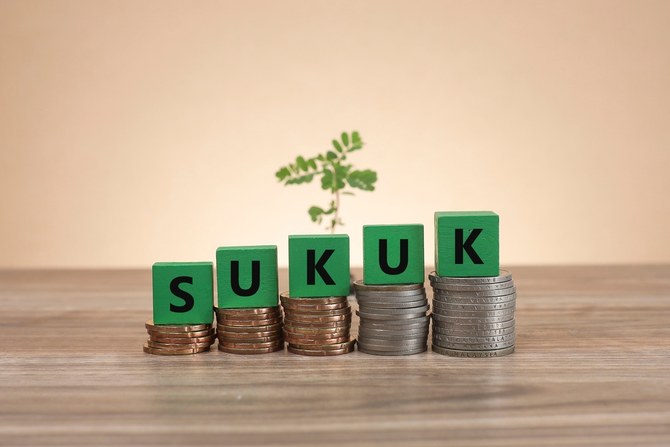
RIYADH: The global sukuk market linked to environmental, social, and governance principles is expected to exceed $50 billion in the next two years driven by funding diversification goals.
According to Fitch Ratings, other factors catalyzing the growth of these Shariah-compliant debt products include new ESG mandates, regulatory frameworks, and government-led sustainability initiatives.
The report highlights that the global ESG sukuk rose by 60.3 percent year-on-year to reach $40 billion outstanding at the end of the first quarter of 2024.
Bashar Al-Natoor, global head of Islamic Finance at Fitch Ratings, said: “Almost 99 percent of all Fitch-rated ESG sukuk are investment-grade. The year started with key regulatory initiatives, which could support standardization, ecosystem development, and aid transparency.”
He added: “There is significant ESG sukuk growth potential, and continuous efforts and increasing confidence will be key to unlocking this.”
The instrument, also known as green sukuk, is a Shariah-compliant financial tool wherein issuers utilize the proceeds solely to finance investments in renewable energy or other environmental assets.
The credit rating agency added that sukuk has a significant share of ESG debt in core markets.
“In the GCC (Gulf Cooperation Council) countries, ESG sukuk reached $15.9 billion outstanding, representing 45 percent of the ESG debt mix, with the balance in bonds,” said Fitch in the report.
However, it added that the market could face challenges from factors like geopolitical tensions, high oil prices, and new Shariah requirements, which might alter sukuk credit risks.
In April, another report from Fitch Ratings indicated that the issuance of this debt product would continue to grow in the remaining months of the year, albeit at a slower pace compared to the first quarter.
The report highlighted that countries in the GCC accounted for 35 percent of the global outstanding sukuk.
Fitch also revealed that the GCC debt capital market has reached $940 billion in outstanding sukuk and is steadily approaching the $1 trillion mark.
In February, it projected that ESG sukuk would exceed 7.5 percent of the global outstanding Islamic bonds in the coming years.
Egypt’s non-oil business shrinks for 41st straight month, PMI shows
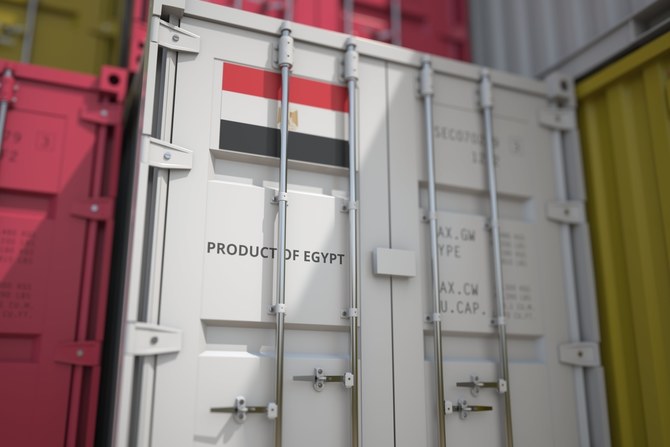
CAIRO: Egypt’s non-oil private sector continued to shrink in April despite a $35 billion investment deal signed with the UAE in February and an $8 billion International Monetary Fund agreement in March, a survey showed on Wednesday.
The S&P Global Purchasing Managers’ Index for Egypt edged down to 47.4 in April from 47.6 in March, remaining below the 50.0 threshold that separates growth from contraction for a 41st consecutive month.
“Business activity once again fell markedly as firms commented on difficult market conditions, with the decline leading to a renewed drop in employment,” S&P Global said.
The employment sub-index slipped to 49.7 in April from 50.8 in March.
Egypt signed an agreement with the IMF on March 6, with an initial $820 million payout received in April and a second, $820 million payout expected after an IMF review in June.
In granting the financial support, the IMF cited shocks to the Egyptian economy from the crisis in neighboring Gaza. Egypt devalued its currency on March 6 and hiked interest rates by 600 basis points as part of the deal.
The output sub-index climbed to 44.8 in April from 44.5 in March and the new orders index improved to 45.5 from 45.0. Business sentiment also improved, with the future output expectations index climbing to 55.3 in April from 52.2 in March.
“Sentiment was at a six-month high, reflecting hopes of exchange rate stability, lower prices and better material availability,” S&P Global said.
Meanwhile, global ratings agency Fitch last week revised Egypt’s outlook to positive from stable.
The agency affirmed Eygpt’s rating at ‘B-,’ citing reduced external financing risks and stronger foreign direct investment.
Foreign investors have poured billions of dollars into Egyptian treasury bills since the country announced the IMF loan program. After the investment in the country’s foreign portfolio and the support from the UAE, Egypt’s net foreign assets deficit shrank by $17.8 billion in March.
Fitch says that initial steps to contain off-budget spending should help to reduce public debt sustainability risks.
The country straddles North Africa and West Asia and has been grappling with an ongoing economic crisis linked to persistent foreign currency shortages. In the fourth quarter, its foreign debt climbed by $3.5 billion to $168.0 billion.
Meanwhile, Moody’s also revised its outlook on Egypt to “positive” in early March while affirming its ratings due to the high government debt ratio and weaker debt affordability compared to its peers.
Oil Updates – prices dip on rising US stockpiles, cautious supply expectations

NEW YORK: Oil prices fell in Asian trade on Wednesday as industry data showed a pile-up in crude and fuel inventories in the US, a sign of weak demand, and cautious supply expectations emerged ahead of an OPEC+ policy meeting next month, according to Reuters.
Brent crude oil futures fell 57 cents, or 0.69 percent, to $82.59 a barrel by 9:45 a.m. Saudi time. US West Texas Intermediate crude futures fell 53 cents, or 0.68 percent, to $77.85 a barrel.
Both benchmarks fell marginally in the previous session on signs of easing supply tightness and weaker global oil demand from an Energy Information Administration forecast report on Tuesday.
US crude stocks rose by 509,000 barrels in the week ended May 3, market sources said, citing American Petroleum Institute figures. Gasoline and distillate fuel inventories also rose, they said.
“API numbers released overnight were moderately bearish due to stock builds in both crude and products ... Concern over weaker-than-usual US gasoline demand and this stock-build have weighed on the prompt RBOB gasoline crack,” ING analysts said in a client note.
Official US government data on stockpiles is due at 5:30 p.m. Saudi time. Analysts polled by Reuters expect US crude oil inventories to have fallen by about 1.1 million barrels last week.
Cautious expectations on supply cuts from the Organization of the Petroleum Exporting Countries and its allies ahead of a June 1 policy meeting also weighed on markets.
“Oil prices have come under further pressure as noise around OPEC+ production policy grows,” the ING analysts said. “Expectations are that members will extend their additional voluntary supply cuts beyond the second quarter of this year.”
Meanwhile, hopes of a ceasefire in Gaza have also put pressure on oil prices in recent sessions, with some analysts saying the risk premium on oil declined in tandem.
“The fall in oil prices since Iran and Israel’s back-and-forth attacks suggests that some of the risk premium in prices has now unwound,” said economist Bill Weatherburn from Capital Economics in a client note.
“Prices continue to be supported by OPEC+ production cuts but we suspect that members will gradually unwind these cuts from July, pushing oil prices lower,” he added.
The US believes negotiations on a Gaza ceasefire should be able to close the gaps between Israel and Hamas. US Central Intelligence Agency Director Bill Burns will travel to Israel on Wednesday for talks with the Israeli Prime Minister Benjamin Netanyahu and other top officials, a source familiar with the matter told Reuters.
Some analyst expectations that short-term demand remains well-supported limited overall price declines.
“Much talk of economic run cuts in recent weeks is overblown in our opinion, with margins still healthy enough, which means rather that Asian demand could rather pick up once turnarounds peak and diminish,” said Sparta Commodities analyst Neil Crosby.
Saudi Arabia transforms SWCC into water authority to boost security
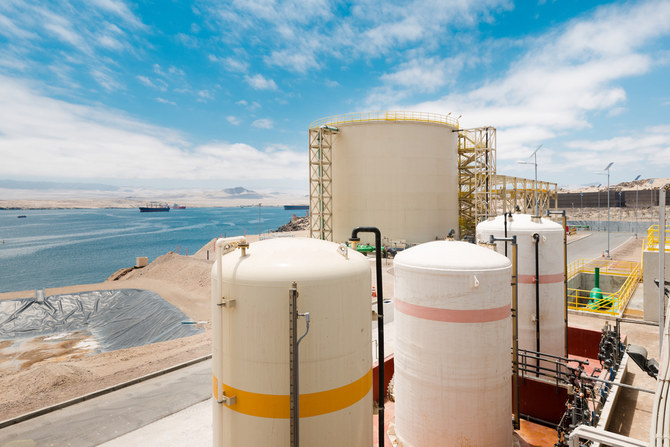
RIYADH: Saudi Arabia’s efforts to bolster its water security received a significant boost with the restructuring of the Saline Water Conversion Corp. into the Saudi Water Authority.
This transition, which includes the adoption of new organizational frameworks, aims to enhance oversight of water-related activities, optimize regulations, improve service management, and foster methodological development.
The approval from the Saudi Cabinet, chaired by King Salman bin Abdulaziz Al Saud, will further bolster the sustainability of water resources and advance the objectives of the National Water Strategy, aligning closely with the goals outlined in Vision 2030. Under the new regulations, the SWA will be tasked with developing and refining policies, plans, programs, and initiatives pertaining to the water sector.
Additionally, it will establish the requisite standards and regulations for licensing within its jurisdiction. Moreover, the authority will work to unify technical and engineering standards across the water sector to ensure adherence to local content and sustainability standards.



